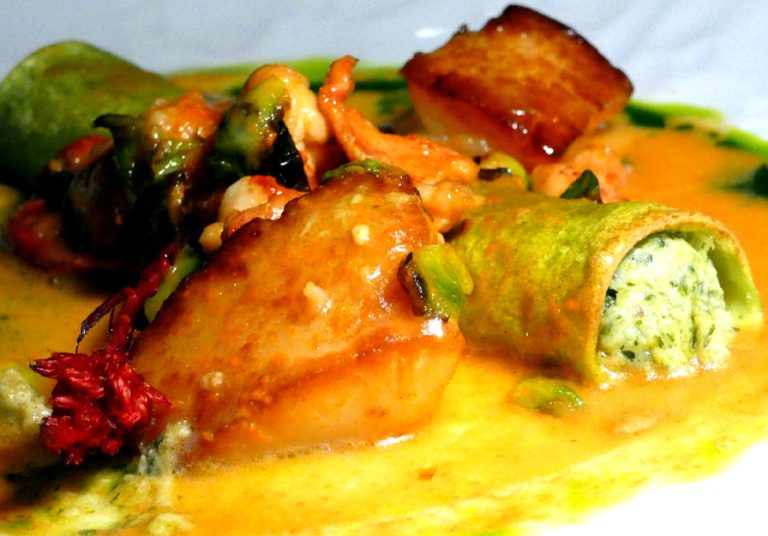As the days get shorter and the nights get colder, summer crops like tomatoes, peppers, cucumbers and green beans begin to taper off, making room for the return of crisp, cool-season greens and long-term storage items that will get you through the winter — like apples, squashes and root vegetables.
I like to think of October as the start of soup season, when we delight in the savory aromas and hearty nutrition our bodies crave during the winter months. Soup season is a long period, however, and October has much more to offer than steaming bowls of liquid sustenance. Besides roasted roots, all kinds of casseroles, and hot mulled cider; October is a phenomenal month for mushroom hunting!
Edible fungi
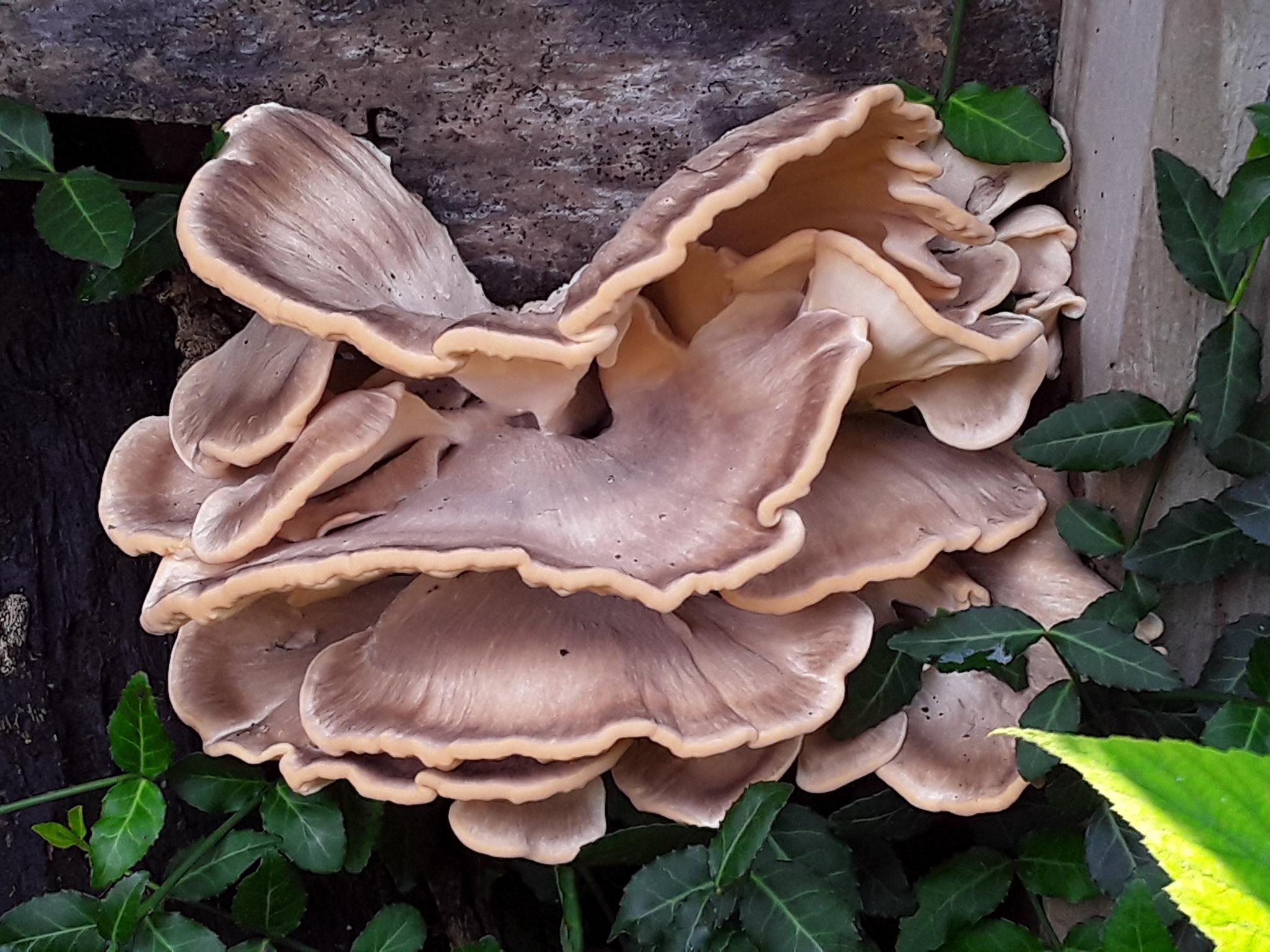
Neither animal, nor vegetable, nor mineral, edible fungi are an oft-forgotten, yet highly-nutritious food group. If your experience in this field is limited to buttons and ‘bellas from the grocery store, you may be astounded to learn that there are probably more than 10,000 different kinds of edible mushrooms in the wild, with amazing variation in color, shape, size and flavor!
Of course, there are still more mushrooms that you don’t want to eat, a few of which may even kill you.
Mushroom hunting for beginners
Beginner foragers should always start with species that are easy-to-recognize and hard to mistake. Luckily some of these are choice edibles and also fairly common.
Chicken of the woods

Success
You are now signed up for our newsletter
Success
Check your email to complete sign up
Chicken of the Woods (Laetiporus sulphureus) is a polypore — a bracket fungus that has pores rather than gills on the underside. While there are other edible polypores, chicken of the woods is the easiest to spot due to its vibrant, peachy-orange surface and spongy yellow underside. It has a somewhat irregular fan shape, with individual pieces growing on top of and into one another. There is nothing quite like it.
Chicken of the woods grows mainly on dead or dying hardwoods, like oak, beech and cherry. This mushroom can also be found on yews or other conifers, but these specimens should be avoided, as they will take up any poisonous compounds found in the wood.

Chicken of the woods can be harvested small (around three-inch diameter pieces) or much larger; but you should not wait so long that the pores start to enlarge — it becomes tough and dry at this point. This delicious mushroom is also attractive to insects, so you’ll want to harvest it before it becomes infested with fungus gnats and beetles.
Once you find a chicken of the woods — even if you missed its peak — you can come back to the same place in the future. They will grow for several years on the same tree, as long as the substrate still has nutrients to offer. Chicken of the woods can “bloom” multiple times each year, so check back after a good rain during the cooler seasons of spring and fall.
As its name implies, chicken of the woods can be used much like chicken: breaded and fried, stir-fried in strips, cooked in soups and stews, or added, cooked, to pastas or salads. Like real chicken, this mushroom should not be consumed raw.
If you happen upon a bounty too big to consume in a week, chicken of the woods can be dehydrated, although its flavor and texture are better preserved by cooking and then freezing.
Oyster mushrooms

Pearl oyster mushroom (Pleurotus ostreatus) is the most common oyster found in North America. Distinguished by its feathery gills that run down the stem, and its cluster-forming, shell-shaped individual oysters, these mushrooms can be found on standing or fallen deciduous trees — like aspen, beech, birch, linden and maple. I recently discovered them growing on my aging magnolia.
Triggered by cold snaps and heavy rains, these mushrooms can pop up almost any time of year; but October usually provides ample suitable weather conditions for a reliable harvest.
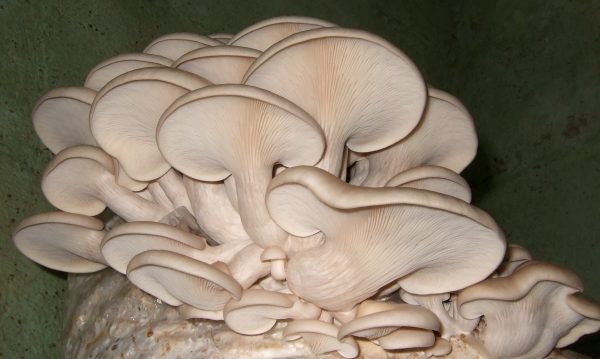
Oysters are mildly sweet and tender, and make a wonderful addition to soups and stews. They are the key ingredient in my daughter’s favorite recipe:
Maria’s mushroom bisque (serves 4)
3/4 pound fresh oyster mushrooms, chopped
2 shallots, sliced thin
2 Tbsp butter
Thyme — one large, fresh sprig or 2 tsp dried
2 Tbsp flour
2 cups water plus bouillon, or stock of your choice
1 cup half and half
Salt and pepper to taste
Saute the sliced shallots and mushrooms in butter until soft and sweet, then add the flour and thyme. Stir until the flour is slightly toasted, then slowly mix in your broth to achieve a creamy consistency. Simmer for 10 minutes or so. Add half and half, restore heat without boiling, and season to taste.
Enjoy with oyster crackers!
Giant puffball
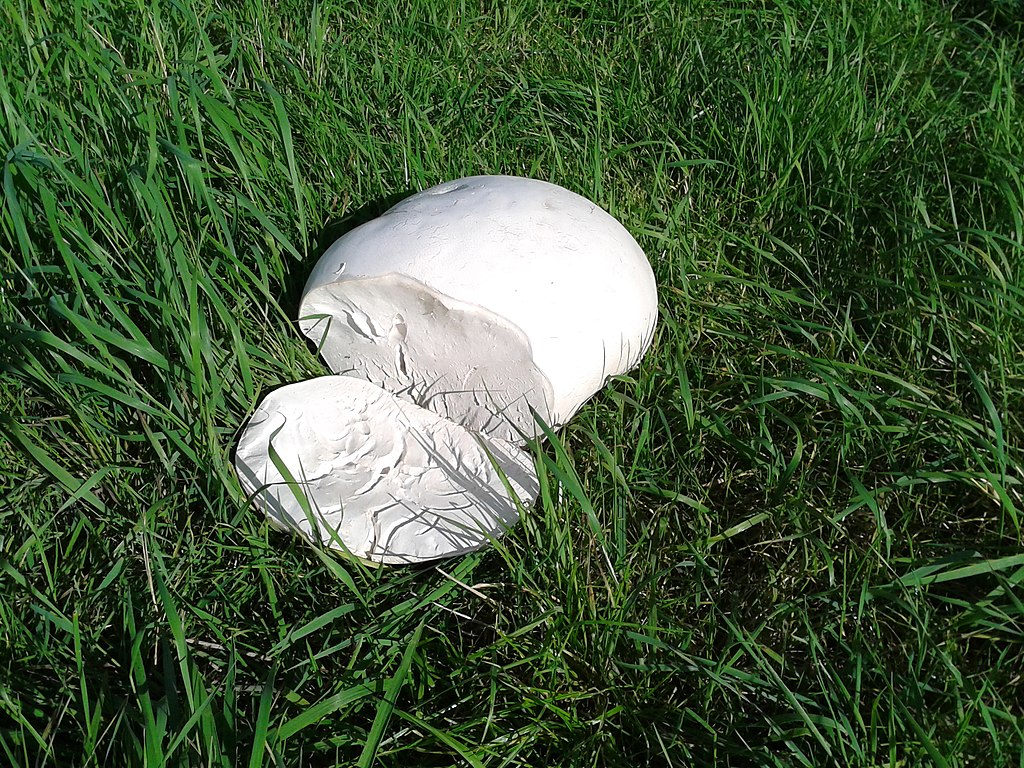
Giant puffballs can be a breathtaking discovery. They don’t grow on trees, but pop up seemingly overnight in open or sparsely wooded areas, and can grow to be well over 12 inches in diameter. Their rounded surface can be smooth or irregular, and is often marred by small rodents and slugs. The interior should have a fine, white, spongy texture — preferably unspoiled by pathways from feeding fungus gnat larvae.
Puffballs can vary in size and surface texture, but as long as they are white inside, and are true puffballs, they are edible. Some young mushrooms can be mistaken for small puffballs, but slicing down the center will reveal the shape of a mushroom about to emerge. If there is no such image, what you have is a puffball.
Puffballs get their name from the way they disperse their spores. Unlike other mushrooms, puffballs hold their spores internally and release them in a cloud of smoke when they mature and burst. There can be trillions of spores in a single large puffball.
Given their spongy texture, puffballs are great at soaking up flavor — which is helpful since they are generally deemed rather flavorless. Personally, I detect overtones of a mild, ripe cheese, and would call the texture “melt-in-your mouth.” Puffballs are often simply sauteed in butter with garlic or onion, but also stand up to breading and frying. Some like to use thick slabs of these gentle giants as ready-made pizza crusts.
Hedgehog mushrooms
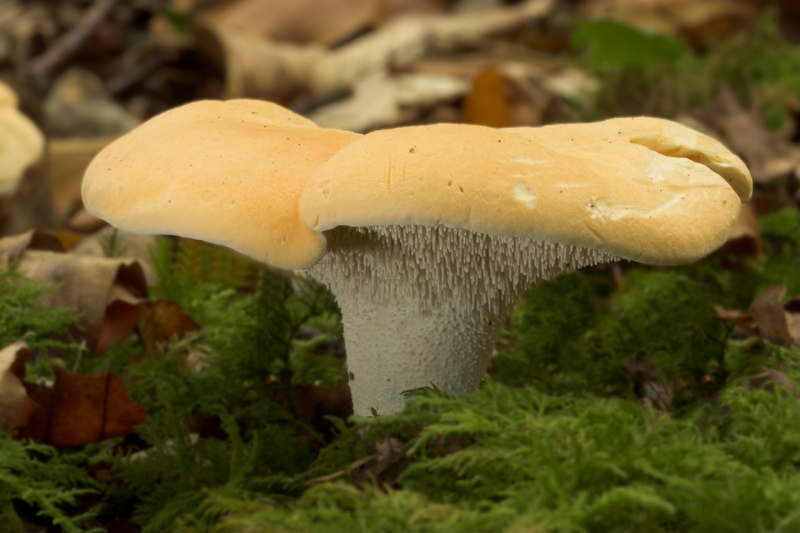
Hedgehog (Hydnum spp) mushrooms get their name from the toothy underside of their caps. Their caps and stems tend to have a soft tan or peachy color. Like puffballs, these mushrooms grow from the ground, rather than on trees.
Hedgehogs are related to the renowned wild edible chanterelle, but are less likely to be confused with anything dangerous. Rarely exceeding six inches in diameter — and usually much smaller — edible hedgehogs have a sweet, fruity or nutty scent, and are simply delicious.
Not all hedgehogs are equally desirable, however. A tiny taste (without swallowing) can tell you whether your specimen is worth taking home. Bitter hedgehogs won’t kill you, but they won’t improve with cooking, either.
Forage preparation
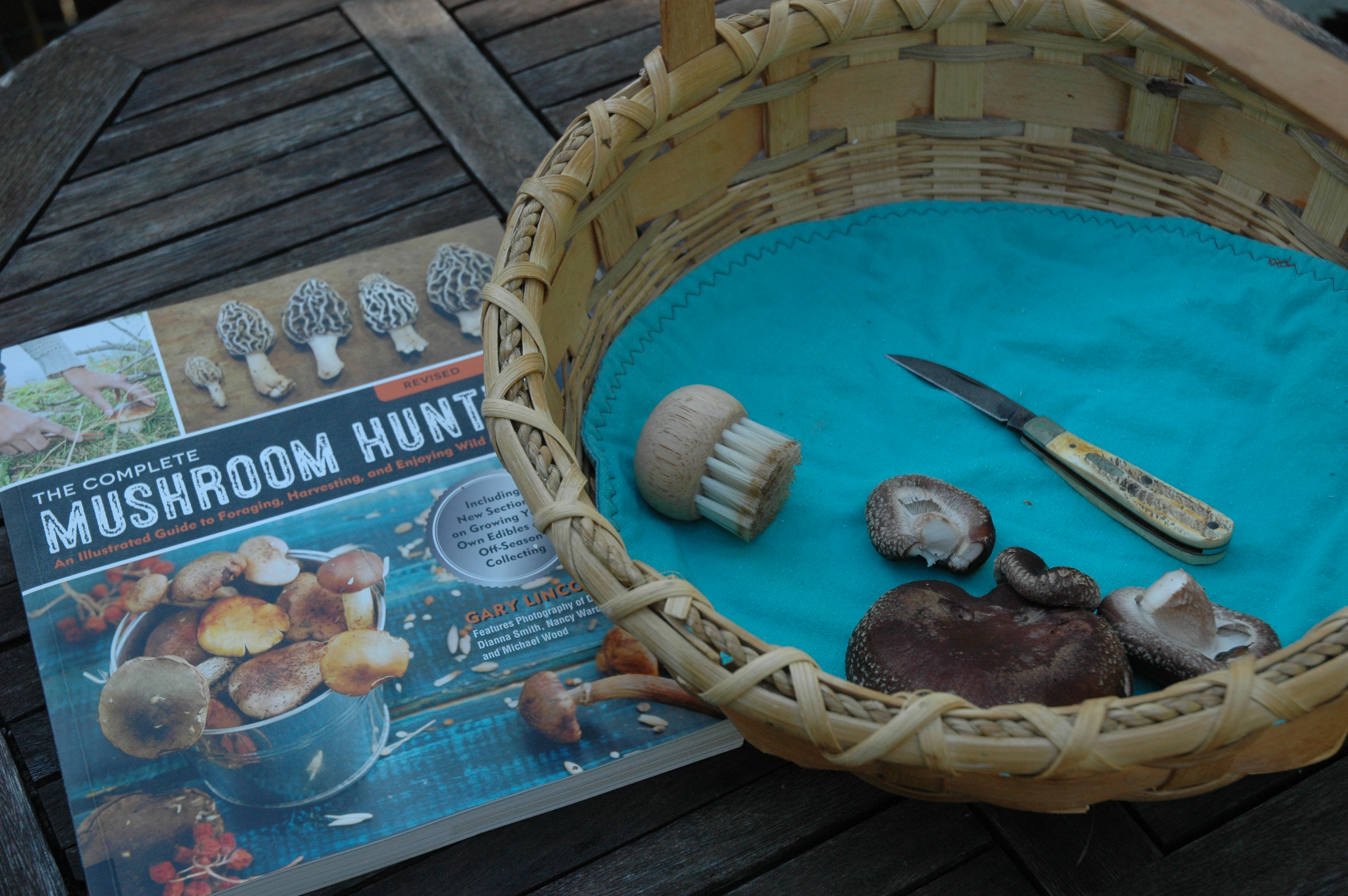
Before you head into the forest for mushroom hunting, a few preparations are worth making.
- Review the types of mushrooms you might find, including the poisonous species in your area. It is always easier when you have an idea of what you might be looking at, rather than trying to identify something on the spot.
- That said, it doesn’t hurt to carry a handy pocket guide with you to help you confirm your hunches.
- Optimism may tell you to bring multiple bags, but usually a collecting basket is sufficient. A sharp knife and a mushroom brush are also useful.
- Keep an open mind. You are likely to be disappointed if you go searching for something specific. Even if you have seen it in that very location before, someone else might have gotten there first! Let nature be your guide and be thankful for whatever falls into your basket, even if it is just a pleasant ramble through the woods.









